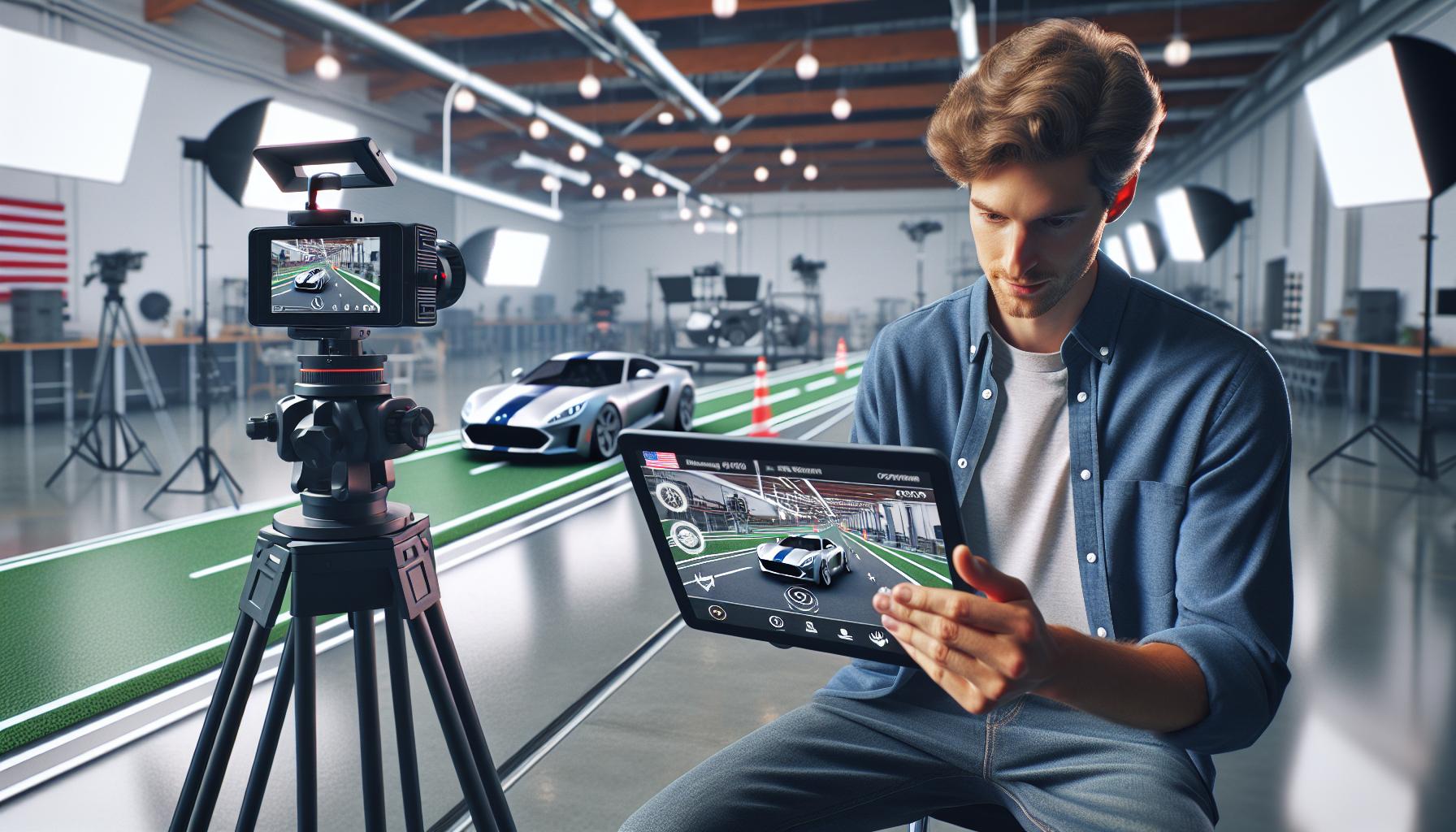Imagine zooming down the street in a car that only exists in your phone—sounds like a dream, right? Well, with LinkedIn, ARKit, and Unity, that dream can become a reality! This powerful trio lets developers create immersive augmented reality experiences that’ll have you feeling like a kid again, but with a lot more coding involved.
LinkedIn ARKit and Unity: Build a Drivable Car in Augmented Reality Videos
LinkedIn ARKit integrates augmented reality capabilities, enabling developers to create unique experiences. This technology utilizes ARKit’s powerful tools for motion tracking, environmental understanding, and light estimation. Unity serves as a versatile game development platform, providing a user-friendly interface for building interactive 3D environments.
Both tools together facilitate the creation of immersive applications. Users can combine LinkedIn’s professional networking features with ARKit’s advanced tracking, engaging their audience in innovative ways. Unity offers a comprehensive library of assets and plug-ins, which accelerate development time and enhance the quality of augmented reality content.
Developers can streamline the process of building a drivable car in augmented reality. They leverage Unity’s physics engine and ARKit’s capabilities to create realistic interactions between the user and the virtual vehicle. Custom scripts in Unity allow precise control over the car’s dynamics, ensuring smooth performance during gameplay.
Engagement with augmented reality technology fosters a new realm of creativity. Users can manipulate virtual cars in real time, enhancing their experience with realistic graphics and responsive controls. This approach not only captivates users but also provides businesses with innovative marketing strategies.
Combining LinkedIn’s outreach potential with ARKit and Unity leads to groundbreaking projects. Developers can present their work to a broader audience while showcasing technical skills and creativity. The collaboration of these platforms paves the way for cutting-edge experiences in augmented reality gaming and professional networking.
Getting Started with ARKit and Unity

Creating augmented reality experiences using ARKit and Unity requires a solid foundation. Developers must set up their environments correctly to ensure smooth project flow.
Setting Up Your Development Environment
Linkedin arkit and unity: build a drivable car in augmented reality videos, Install the latest versions of Xcode and Unity before starting. Ensure the Unity ARKit plugin is integrated into the Unity editor. Use macOS for optimal compatibility, as ARKit operates only on Apple devices. Creating a new project in Unity with AR Foundation templates simplifies the process. Select ARKit as the deployment platform in the Player Settings. Testing on an iOS device becomes essential, allowing developers to see real-time interactions and performance.
Important Tools and Resources
Access various resources to enhance the development experience. Apple’s official ARKit documentation provides essential insights into features and capabilities. Unity’s Asset Store contains pre-built assets that streamline the creation process. Online forums and communities offer support, allowing developers to ask questions and share experiences. Utilizing GitHub can facilitate collaboration, providing access to open-source projects. Integrating these tools promotes efficiency, enabling aspiring developers to build engaging augmented reality applications.
Building the Drivable Car Model

Creating a drivable car model in augmented reality combines artistic design and technical implementation using Unity and ARKit. Carefully following the development process leads to engaging user experiences.
Designing the Car in Unity
Begin by modeling the car using Unity’s built-in tools or importing 3D models from external sources. Various asset formats like FBX or OBJ can enhance design flexibility. Different components of the car, such as wheels and chassis, should remain separate to facilitate realistic physics interactions. Textures and materials play a crucial role in achieving visual appeal, so applying high-quality textures elevates the overall design. After completing the model, developers must ensure proper scaling for accurate representation in augmented reality.
Integrating ARKit Features
Integrating ARKit enhances the car’s interaction within an augmented space. Utilizing ARKit’s motion tracking allows the car to maintain stability in the user’s environment. Consider implementing features like realistic shadowing and light estimation for more immersive visuals. Establishing responsive controls gives users a smooth driving experience, while physics simulations apply realistic movements to the car. Leveraging ARKit’s environmental understanding enables the car to navigate surroundings naturally, improving user engagement and realism during operation.
Creating Augmented Reality Videos

Creating augmented reality videos requires effective capturing and editing techniques to enhance the immersive experience.
Capturing and Editing AR Footage
Utilizing high-quality cameras for capturing AR footage is crucial. Using stabilization tools can minimize unwanted movements, ensuring smooth visuals. Incorporating ARKit’s motion tracking capabilities during filming allows for precise environmental interactions. Editing software such as Adobe Premiere Pro or Final Cut Pro provides robust features for refining videos. Adjusting color grading enhances the visual appeal, while audio enhancements improve immersion. Incorporating overlays or graphics accentuates important elements within the footage. Consistent editing styles create a more professional look and feel.
Best Practices for Engaging Content
Prioritizing user engagement in augmented reality videos is essential. Crafting clear narratives helps maintain viewer interest throughout the content. Using interactive elements encourages users to participate actively in experiences. Implementing diverse camera angles provides varied perspectives, enhancing visual storytelling. Maintaining concise video lengths prevents viewer fatigue while delivering impactful messages. Promoting the content on LinkedIn can widen audience reach and attract potential collaborators. Highlighting key features and benefits through call-to-action segments increases the likelihood of conversions and user retention.
The fusion of LinkedIn
The fusion of LinkedIn, ARKit, and Unity opens up a world of possibilities for developers looking to create engaging augmented reality experiences. By harnessing these powerful tools, they can build immersive environments that not only captivate users but also showcase their technical prowess.
As the demand for innovative marketing strategies continues to grow, the ability to create drivable cars in augmented reality positions developers at the forefront of this exciting field. With the right resources and a solid understanding of the technology, the potential for creating memorable and interactive content is limitless.
Embracing this technology can lead to groundbreaking projects that redefine user engagement and elevate brand visibility in the digital landscape.



